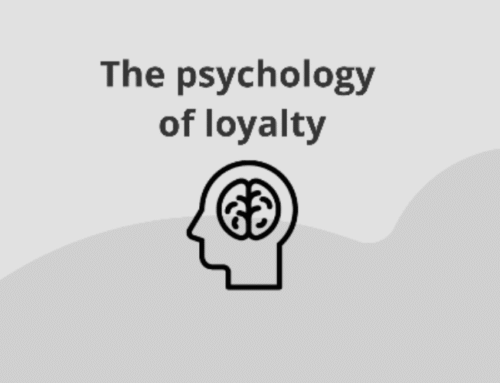How to Manage a Farm/Garden Center Loyalty Program
With the 80/20 rule in mind—80 percent of business is generated from 20 percent of customers—it should come as no surprise that customer loyalty programs are growing in popularity. Many industries work well with rewards programs, most selling directly to consumers (B2C) like grocery stores and other retail outlets… And garden centers are no exception.
A loyalty program can be a powerful marketing strategy to retain loyal and frequent customers (as the name implies) and expand your business. By providing incentives and rewards to your regular customers, you encourage repeat business and generate positive word-of-mouth, thus increasing customer lifetime value and boosting revenue. It’s a win-win!
“I would say the number one thing is the customers feel like they’re getting something back, that they’re not just throwing the dollars out there. They’re getting a reward for choosing The Good Earth as their shopping destination,” says Jennifer Gibson, a Horticulturist at The Good Earth in Little Rock, Ark.
“We know that our 10,000 loyalty customers, on average, spend 78 percent more than a non-loyalty member,” Gibson says.
In addition, analytical data, such as demographics, purchase history, and preferences, can be used to tailor marketing efforts and promotions to specific customer segments, increasing the effectiveness of your marketing campaigns and lowering ad costs.
“One of our goals was to lower our advertising cost by advertising to our target consumer,” says Bill Stacy, Operations Manager at Ray Wiegand’s Nursery, Macomb Township, Mich. “If you put an ad in the newspaper, it goes to say 20,000 people. Of that 20,000, you may capture 1,000 of them; for less cost, you can email the 1,000 and then put an ad in the newspaper once a month for those who don’t know you’re there.”
Like anything in business, no one size (or, in this case, loyalty program) fits all. Planning, implementing, and managing a loyalty program that fits your business and customer needs is essential. That said, the right software solution should be flexible to support and improve your business operations continuously.
The following 5 ideas for a farm/garden center loyalty program will guide you when your customers increase to 1,000, 10,000, etc.

5 Ideas for a Farm/Garden Center Loyalty Program
1. Reward Points
A points program is a system that rewards points to customers for making purchases or completing specific actions, such as writing a review or referring a friend. The accumulated points can be redeemed for discounts, garden rewards, free products, or exclusive experiences.
Here’s an example of how a points program could work:
- A customer signs up for the program and is given 100 points as a welcome bonus.
- The customer purchases $50 and earns 5 points per dollar, totaling 250 points.
- The customer writes a review for a product and earns 50 points.
- The customer refers a friend who makes a purchase, and both the customer and the friend receive 100 points each.
- The customer has accumulated 500 points and can redeem them for a $25 discount on their next purchase.
2. Offer Double-Point Days
Double-point days are promotional periods when customers earn twice the expected number of loyalty points for their purchases. For example, if a customer typically earns 10 points for a $1 purchase, they would earn 20 points during a double-point day for the same purchase amount.
To make the most of double-point days:
Plan ahead: Determine the best time to offer double-point days based on customer behavior and sales trends.
Promote the event: Use social media, email marketing, and other channels to inform customers about the upcoming double-point days. By promoting the event in advance and highlighting the benefits of earning double points, businesses can create a sense of urgency and excitement among customers.
Make participation easy: Ensure that customers can easily track their points and redeem rewards.
Analyze the results: Monitor the impact of double-point days and adjust future promotions based on customer response and sales data.

3. Free Access to Events
By offering exclusive access to events, businesses can deepen the relationship between the brand and its loyal customers, creating an emotional connection beyond its products or services. Events can include product launches, rewards club VIP experiences, private shopping, concerts, sporting, or networking events.
To implement free access to events:
Understand your customers’ interests: Analyze customer data to determine which events appeal most to your target audience.
Plan events carefully: Plan events that align with the brand’s values and message and offer a unique experience that customers cannot find elsewhere.
Promote events to loyal customers: Use targeted marketing to promote events to loyal customers and clarify that they receive exclusive access.
Track attendance: Collect data on event attendance and analyze customer feedback to identify opportunities for improvement. Make it easy to attend: Provide clear instructions on how to attend and ensure that logistics are in place to provide a seamless experience.
4. Targeted Coupons/Discounts on Special Products
Targeted coupons/discounts are personalized offers based on customer behavior and purchase history. For example, if a customer frequently buys a specific product or service, you can offer a coupon or discount on that item to encourage repeat purchases.
Targeted coupons and discounts can be particularly effective when used to promote special products or limited-time offers. By offering a discount on these items, businesses can create a sense of urgency and encourage customers to take advantage of the offer before it expires.
To implement targeted garden center coupons/discounts on special products:
Analyze customer data: Collect and analyze customer data to identify patterns in purchasing behavior and product preferences.
Develop personalized offers: Use this data to develop personalized offers targeting each customer’s preferences.
Deliver offers through multiple channels: Deliver these offers through email, text message, mobile apps, or social media to inform customers. Monitor response rates: Monitor customer response rates and measure data to refine and improve the program over time.

5. Redeem Rewards Across All Products
To increase the likelihood of customer engagement, customers can redeem rewards for their purchases of any product within your portfolio and use those rewards to purchase other products they may not have tried before, or that are typically more expensive. This can be particularly effective for brands that offer a wide range of offerings.
The centralized rewards system that tracks customers’ points and rewards across all products and services should be easy to use and accessible to customers through a mobile app or online portal.
Define the rewards: Decide on the types of rewards you want to offer, such as discounts, free products, exclusive access, free membership, or other perks.
Create a point system: Establish a point system allowing customers to earn points for every purchase. Customers can then redeem these points for rewards.
Develop a redemption process: Create a simple and easy-to-use redemption process that allows customers to redeem their points for rewards. This process should be clearly communicated to customers.
Promote the program: Promote through various channels such as email, social media, and in-store displays to raise awareness and encourage participation.
Track and analyze results: Track and analyze the results to meet customer needs better and drive desired outcomes.
Finally, privacy is a key concern. Customers want to know that their personal information is being protected and that they have control over how their data is used.
Be transparent about data collection: Be clear about what data you collect from customers and how it will be used. This information should be outlined in a privacy policy that is easily accessible.
Allow customers to opt out: Customers should be given the option to opt out of data collection or to delete their data if they no longer wish to participate in the loyalty program.
Secure customer data: Businesses should take steps to secure customer data and prevent unauthorized access.
Avoid spamming customers: Obtain explicit consent before sending marketing messages.
Respect customer preferences: Respect customer preferences and only send relevant and personalized messages. This can be achieved by analyzing customer data and behavior to understand their interests and preferences and tailoring messages accordingly.
“Keep emails spaced apart,” says Stacy. “I sent an email for a class that normally attracts 20 people, but we had 80 people show up. When I addressed the class, they told me they loved getting the email, but ‘don’t send me too many, or I’ll block you.”‘
Your Farm/Garden Center Loyalty Program Software Solution
Invest wisely in your business, time, and success with adaptable software. bLoyal’s fully automated POS and eCommerce integration capabilities and robust loyalty program management tools enable businesses to design, implement, and manage personalized, omnichannel loyalty programs, track customer behavior and reward customers for their loyalty.
“This allows us to manage the type of rewards we want to give, allows us to pull our mailing list, and allows us to look at sales by loyalty customers and see what they purchased,” says Terry Esbenshade, owner of Esbenshade’s Garden Centers in Lancaster County and Berks County, Pa.
For more information on how to get started, email us today at info@bloyal.com or request a demo and let us help you find the best solution for your farm/garden center.




